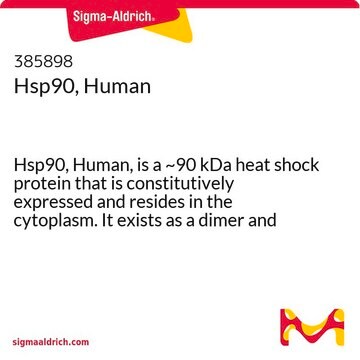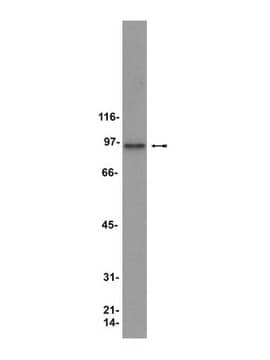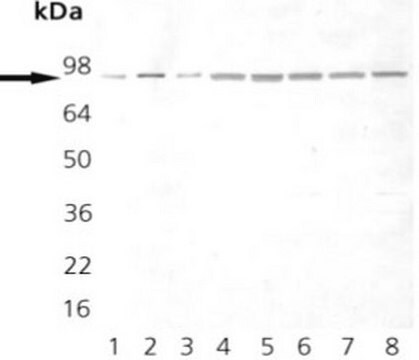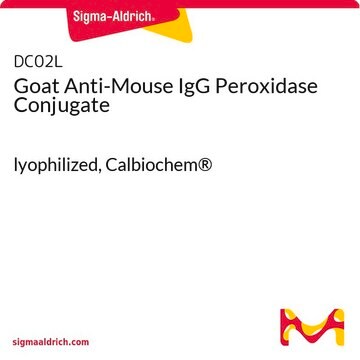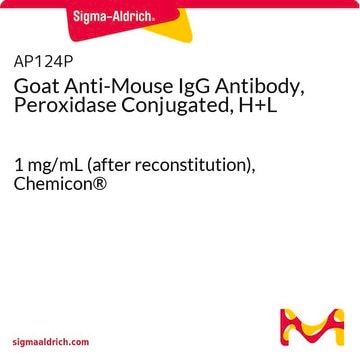H1775
Monoclonal Anti-Heat Shock Protein 90 antibody produced in mouse
clone AC-16, ascites fluid
Sinónimos:
Anti-EL52, Anti-HEL-S-65p, Anti-HSP86, Anti-HSP89A, Anti-HSP90A, Anti-HSP90N, Anti-HSPC1, Anti-HSPCA, Anti-HSPCAL1, Anti-HSPCAL4, Anti-HSPN, Anti-Hsp103, Anti-Hsp89, Anti-Hsp90, Anti-LAP-2, Anti-LAP2
About This Item
Productos recomendados
origen biológico
mouse
Nivel de calidad
conjugado
unconjugated
forma del anticuerpo
ascites fluid
tipo de anticuerpo
primary antibodies
clon
AC-16, monoclonal
mol peso
antigen 88 kDa
contiene
15 mM sodium azide
reactividad de especies
wheat germ, chicken, Sf9 cell line, rabbit, rat, human, mouse, Achlya
envase
antibody small pack of 25 μL
técnicas
microarray: suitable
western blot: 1:1,000 using cultured human foreskin fibroblasts
isotipo
IgG2b
Nº de acceso UniProt
Condiciones de envío
dry ice
temp. de almacenamiento
−20°C
modificación del objetivo postraduccional
unmodified
Información sobre el gen
human ... HSP90AA1(3320) , HSP90AB1(3326)
mouse ... Hsp90aa1(15519) , Hsp90ab1(15516)
Categorías relacionadas
Descripción general
Especificidad
Inmunógeno
Aplicación
Immunohistochemistry (1 paper)
Western Blotting (1 paper)
Acciones bioquímicas o fisiológicas
Cláusula de descargo de responsabilidad
Not finding the right product?
Try our Herramienta de selección de productos.
Opcional
Código de clase de almacenamiento
12 - Non Combustible Liquids
Clase de riesgo para el agua (WGK)
WGK 3
Punto de inflamabilidad (°F)
Not applicable
Punto de inflamabilidad (°C)
Not applicable
Certificados de análisis (COA)
Busque Certificados de análisis (COA) introduciendo el número de lote del producto. Los números de lote se encuentran en la etiqueta del producto después de las palabras «Lot» o «Batch»
¿Ya tiene este producto?
Encuentre la documentación para los productos que ha comprado recientemente en la Biblioteca de documentos.
Artículos
Quantitative and qualitative western blotting to validate knockdown by esiRNA.
Nuestro equipo de científicos tiene experiencia en todas las áreas de investigación: Ciencias de la vida, Ciencia de los materiales, Síntesis química, Cromatografía, Analítica y muchas otras.
Póngase en contacto con el Servicio técnico

